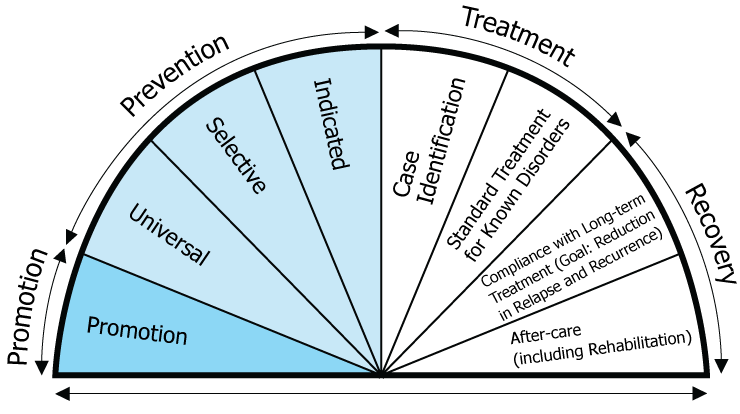Does prevention work?
|
|
We think so! And so do our partners at SAMHSA, according to their website:
In 2014, an estimated 9.8 million adults aged 18 and older in the United States had a serious mental illness, and 1.7 million of which were aged 18 to 25. Also 15.7 million adults (aged 18 or older) and 2.8 million youth (aged 12 to 17) had a major depressive episode during the past year. In 2014, an estimated 22.5 million Americans aged 12 and older self-reported needing treatment for alcohol or illicit drug use, and 11.8 million adults self-reported needing mental health treatment or counseling in the past year. These disorders are among the top conditions that cause disability and carry a high burden of disease in the United States, resulting in significant costs to families, employers, and publicly funded health systems. By 2020, mental and substance use disorders will surpass all physical diseases as a major cause of disability worldwide. |
Moving our attention "Upriver": The Prevention Parable
|
A man and woman fishing downstream. Suddenly a person comes down the river struggling for life. The fisherfolk pull her out. Then another comes and again must be rescued. This happens all afternoon and the fisherfolk are getting very tired from constantly pulling people from the river. Eventually they think, “We need to go upstream and find out why so many people are falling in the water”.
When they go upstream, they find that people are drawn to the edge to look at the river, but there is no safe way to do this. Many of them fall. The fisherfolk go to the community leaders and report the number of people who have fallen into the river. They also report that this is due to the lack of a protective barrier on the cliff. Community leaders build a wall behind which people may safely view the water. Some still fall, but there are many fewer victims to rescue. This story reminds us that a case-by-case basis does not solve the bigger problem. When we change the environment, we can change the outcome. |
Continuum of Care ModelOur work focuses on the blue sections of the Continuum of Care model, Promotion and Prevention. Through this lens we can reach our whole community, smaller selective groups, or even indicated groups and individuals. We can do this through awareness, training, and programming. Our coalition does not diagnose, treat, or provide recovery to individuals who may be experiencing substance use or addiction, we work with individuals who may be at risk before that behavior starts.
|



